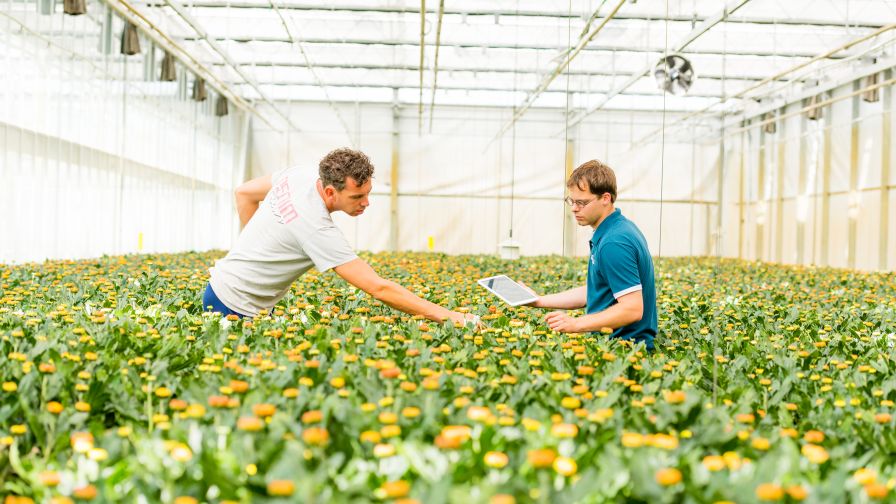Petitti On Grower-Retailer Cooperation

Just a few years ago, grower-retailers like Angelo Petitti of Casa Verde Growers and Petitti Garden Centers in Northeast Ohio were experiencing consistent double-digit growth from year to year. But then the economy dropped and the housing market turned for the worse, limiting the number of market opportunities for growers like Casa Verde.
Growers are still waiting for dramatic improvements in housing, but the wisest ones are using the recovery period to reassess how their business operates. In this interview, Petitti shares the steps he’s taken the last few years to sharpen his business management skills and steer his operation through the recession.
GG: New construction isn’t taking place – and probably won’t on a large scale anytime soon. How should the growers and retailers that depend most on housing react to a market that’s slow to recover?
AP: It’s something we’re all trying to figure out. Everybody is really trying to figure out what the consumer needs. We’ve been selling azaleas and hydrangeas, but without the new homes, I don’t know how many more hydrangeas consumers are going to be able to plant.
Home ownership is different today than it was three or four years ago. Then, you looked at the home as an investment. People looked at the home as their retirement. That’s all gone. People are living in apartment buildings; people are moving around a lot more. It’s just a different world.
From a home-building standpoint, I don’t know how much more opportunity there is going to be. We could use some brand-new construction to take up our numbers. One thing I’ve seen is the nursery yards at the garden centers have shrunk dramatically. Our nursery area has shrunk to less than half of what it used to be. So there has been a shift in the thinking of the operation.
GG: Your business produces most of the plants that are sold at your garden centers, but from your perspective what could the wholesale growers serving independent retailers do to strengthen their relationships?
AP: My number one priority would be to visit the head of the company to learn about their business, their needs and what I can do to help their business grow. I would really be a lot more concerned and worried about what it’s going to take to make them successful. You need to work on promotions and how you’re going to develop traffic together. I think this is something growers are going to have to do better.
For us, we look at who’s our best [supplier] and that’s where we put our efforts. For example, we do all of our business with Commerce on the hard lines. It’s worked phenomenally because they’re very concerned about our well-being. Their fill rate has been about 98 percent. The people I did business with before had a fill rate in the 60s. Not only did we miss sales before, but we didn’t deliver what our customers needed.
We also own a nursery and sell to other growers. So I’m on the other side of the equation there. What I’ve done is visit people with whom I think we have a good future together. We learn what’s important to their business, what kind of service they need, what kind of systems they need to make their job easier. We try to understand what’s going to facilitate them best so we can deliver effectively.
It’s a lot of work, but customers, particularly retailers, are not going to give you an order for the year anymore. So you have to develop a system that’s weekly or bi-weekly – that’s what my stores need.
GG: Adapting to a weekly or bi-weekly delivery system is a dramatic change for a number of growers. How can growers improve their service to retailers to meet the more frequent demand?
AP: Growers used to get an order for the year, and they could project off that. But those days are pretty well gone. The reality is the growers who don’t adapt are not going to be around.
When you look at a crop like azalea, it’s hard to plan something like that for five years down the road. Long-term crops are really a challenge. And that’s why communicating with your customer base is important. Growers have to really spend a lot of time developing partnerships so there is an understanding of what the customer’s needs are.
It’s a new way, yes. It’s not the way the industry has done business all these years. So I think it’s just going to take a little time to develop the new systems that are needed.
GG: One thing that gets under a lot of growers’ skin is the price game retailers have played the last few years. Of course, retailers have a business to run, and price is certainly a key factor. But what could retailers do to strike a balance between remaining loyal to their top vendors and hunting for the next best price?
AP: The last two or three years, there has been a glut from all the oversupply. There’s been material all over the place. Everyone has been taking advantage of these deals. But that’s over now.
Now, I think we’re going to see some shortages of certain kinds of material. I don’t think many people have planned a whole lot the last two or three years. Everyone’s trying to go through the inventory they have and figure out the right number to grow.
For us, we don’t want to be searching for product all over the place every week. That’s not really effective. Personally, I like to have what I need when I need it.
GG: What has you excited about spring?
AP: In annuals, there are a lot of opportunities in packaging so you can upsell your product. There’s also an opportunity to be more aggressive at cost analysis. We were all amazed the first time we really got very serious about it. Talk to your people. They may have more answers than you have when you’re doing cost analysis. Having discussions with them is a positive.
Also talk to your customers. You should be able to put a list of things together that you can do or things you’re currently doing that don’t make sense.
GG: What were some of the first steps your business took when you decided to get more serious about cost analysis?
AP: First of all, be honest with yourself. A lot of times people start to believe some things that are not quite real. So I think the first thing to do is really break down your business. You have to break all of your costs down so you understand what it takes to open the door in the morning.
One thing you want to do is have a financial plan to cover your costs so you understand what your costs are every day. That’s where talking to your people helps, because you can look at a function and ask, “Are we doing it the best way?” I think this is really a basic start.
In the past, we’d have years when we had a nice increase over the previous year, so we covered a lot of [costs]. We didn’t really look at operating as tight as we should have. Today, we don’t have the luxury of not looking closely at our costs.









